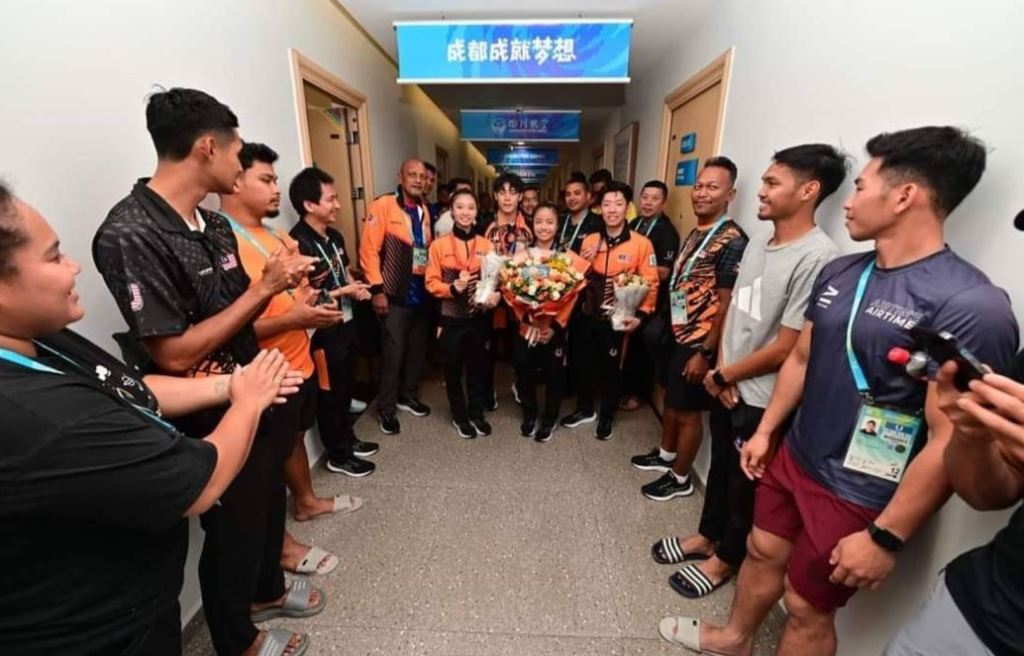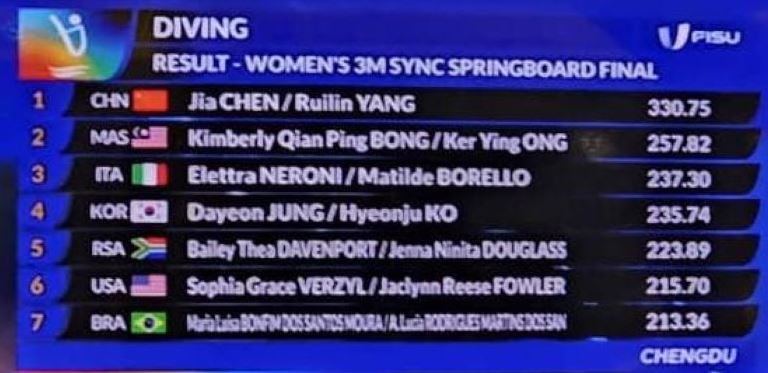Universities the hub for the future of Malaysian Sports

The myth that Universities are a graveyard of sports is long gone and Universities these days should be embraced wholly as part and parcel of the Malaysian sports agenda to seek excellence by the Ministry of Youth and Sports.
Even more so because Universities come under the Ministry of Higher Education (MOHE), and it will be more feasible and rewarding with the Sports Ministry and the former, working hand in hand, under government umbrella.
Even if the collaboration exists, it certainly can be enhanced further.
The National Sports Council (NSC) and National Sports Institute (NSI), should be also working hand-in-hand and engaging the Universities more closely, instead of them trying to be a ‘stand alone’ and assume the role of ‘Godfathers’ of Malaysian sports.
The perceptions of the Universities as the burial place of an athlete’s career are an outdated view and is no longer relevant.
The specific role of the University has been stated in the National Sports Policy to provide more opportunities for athletes to continue their studies at higher Education Institutions and they can be more active and highlight their potential as athletes even while at the University.
Following on from that, the Higher Education Institution Sports Policy 2009 exists with the aim to produce “The Thinking Athlete”.

Thirty percent of the athletes who represent the country come from the Universities. The existence of a specific policy on sports development at the University level has witnessed a drastic development and since that more than twenty public and private higher education institutions offering more than forty sports study programs from Diploma level to Doctor of Philosophy in fields related to sports science and sports management exists.
This prompted public and private higher education institutions now race to do scouting to get junior athletes and state athletes as well as student athletes from Malaysian sports schools, to offer them the opportunity to continue their studies at the university and at the same time continue to be active in sports.
All this was presented by Datuk Dr Pekan Ramli, the Deputy Under Secretary, Sport Section, Strategic Planning Department (Policy), Ministry of Higher Education in his paper ‘development of sports in universities’.
Pekan, a former broadcast journalist, who is passionate about Universities Sports, strongly believes that the Universities is the way forward to see Malaysian sports reach a higher level at the international level.
But whether the authorities who manage sports in the country see that way or are keen to engage the universities, is a question to be answered.
Infact, besides the sports authorities, National Sports Associations should also engage closely with the universities.
Today, sports has become an integral part of the university system. There are inter-university games, inter-college and higher learning institution games and inter-university leagues for football, hockey, squash and bowling, among others.
University students also compete in the Asean and World Universities Games (currently ongoing in Chengdu, China) and many of our national athletes are products of the universities.
Wushu exponent 22-year-old Tammy Tan created sporting history by winning the country’s first ever gold medal in the World University Games in Chengdu, China, ending a 38-year gold medal drought in the Games, while former gymnast Mandy Cebelle Chen was the first to make podium at the Games winning a bronze in the tajiquan discipline in wushu, while swimmer Bryan Leong and athlete Umar Osman set national records.
Thirteen years ago, then Minister of Higher Education (KPT), Datuk Seri Mohd Khaled Nordin announced that RM10 million was allocated to higher learning institutions under its programme to develop sports among undergraduates.
Sports Excellence Centres at universities nationwide was already in place and the funds allocated was to develop selected sports in a systematic method and provide further education for students athletes in order to create & quot; thinking athletes & quot.

Eight universities had already been selected as Sports Excellence Centres which each focusing on a specific sport.
The eight Sports Excellence Centres are Universiti Malaya (netball), Universiti Sains Malaysia (swimming), Universiti Kebangsaan Malaysia (cricket), Universiti Putra Malaysia (rugby), Universiti Teknologi Malaysia (rowing), Universiti Teknologi Mara (football), Universiti Utara Malaysia (golf) and Universiti Malaysia Sabah (taekwondo).
Besides the eight universities, other institutions which had the potential to become centres for sporting excellence had also been given the status of Focus Sport Centre.
There were 18 higher-learning institutions with the Focus Sport Centre status Out of the RM10 million allocated by the ministry for sports development that year, about RM7.2 million was for the Sports Excellence Centres and RM3.6 million for the Focus Sport Centres.
Maybe and update on the status could be given and whether the emphasis has grown.
However, whether a proper study was made before naming the sports to be focused in each particular higher learning institution was made and raised then.iu7 Hope it has been addressed after all these years.
I know for a fact that in 2006 an in-depth study was done by Prof Rabindarjeet Singh who was then with the National Institute of Sports (NSI) on sports adoption by Universities.
A report was complied and it contained the sports to be adopted by the respective University based on the study made which involved available manpower, equipment facilities which were available and what needed to be purchased and manpower to be trained for the University to be effective.
The development of high-performance sports at higher education institutions has seen more and more university athletes now able to represent the country and contribute to the success of the national contingent at regional and international championships.
University athletes representing the country has also been consistently achieved at sporting events such as the Sea Games, Commonwealth Games, Asian Games and the Olympic Games. University athletes are now among the main contributors to the medal collection for the national contingent at various sports games.
To ensure the continued success of athletes and as a strong encouragement to them, KPT also provides sports scholarships for outstanding athletes every year.
Up to now, almost two thousand outstanding university athletes have received the scholarship.
Even some public and private higher education institutions have also given privileges by giving them their own scholarships and exempting student-athletes from tuition fees and college accommodations fees.
Although there is no specific study or empirical study to show the connection between the privileges they receive and the improvement in the performance of these student athletes, MOHE is confident that the success of university student
athletes in various sports games when representing the country has a special correlation with the awarding of the scholarship.
In order to ensure that the careers of student athletes at the university continue and not only active in sports seasonally or once a year during the semester break only, but a massive transformation has also been carried out by the MOHE by creating university level sports tournaments more organized and with systematic manner and running throughout the year.
Various university-level sports tournament has now been held with the concept of ‘NCAA’ by having several circuits and must ended with the grand final along the year for several championship such as Varsity Track and Field, Varsity Sepak Takraw League, Varsity Futsal League, Varsity Softball League and several other sports.
However, the major role played by MOHE and the university in developing the sports higher performance of student athletes as higher education institutions in providing more guaranteed future opportunities for student athletes is still seen as a side character to produce high performance sports athletes in the country.
In fact, the sports development agenda at university is often left out of the sports calendar of National Sports Associations (NSA) and the NSC.
Although various initiatives have been made to close this collaboration, it has not yet been integrated. There is still the conflicts of interests and individual egos in some NSA towards the issue of ownership of the athletes to represent country to participate in university sports games at international level such as Asean University Games (AUG), World University Games or Universiade and World University Championship (WUC).
It is about time, that universities are allowed to play a more prominent role in the national sports agenda.
Universities are no longer the graveyard of sports. A rethink is urgently needed and long over due. One body cannot be handling 20 over sports.
In fact, the schools have now become the graveyard of sports, and this is another issue which needs to be addressed urgently.
A topic for discussion in the coming columns.


No comments:
Post a Comment